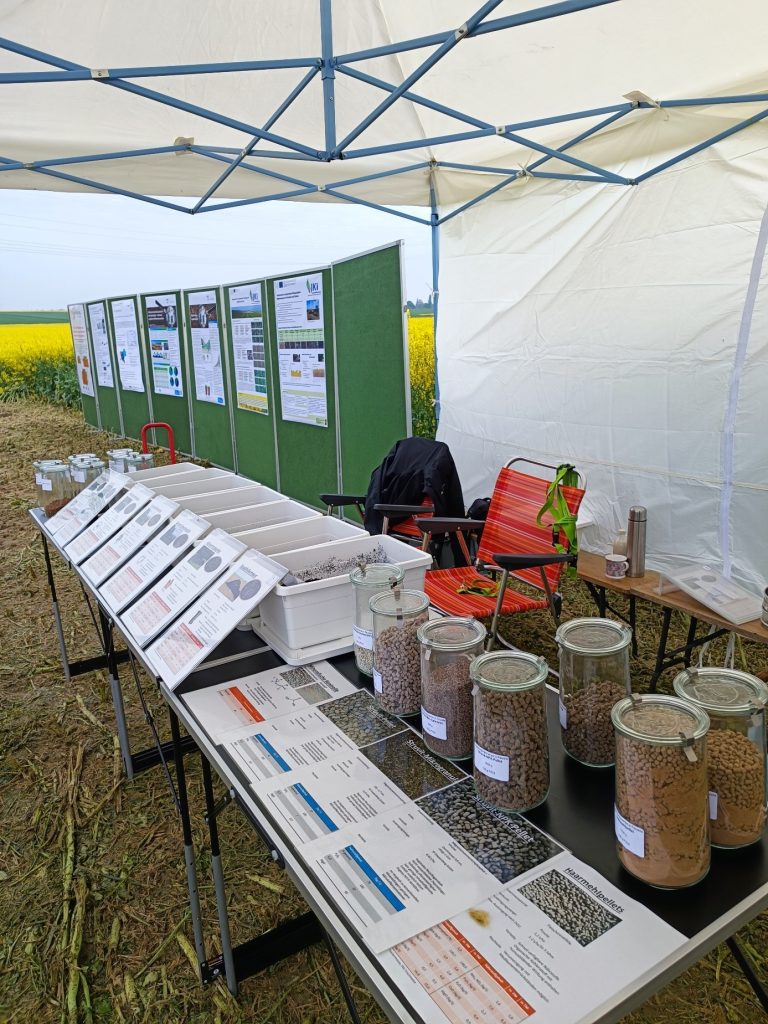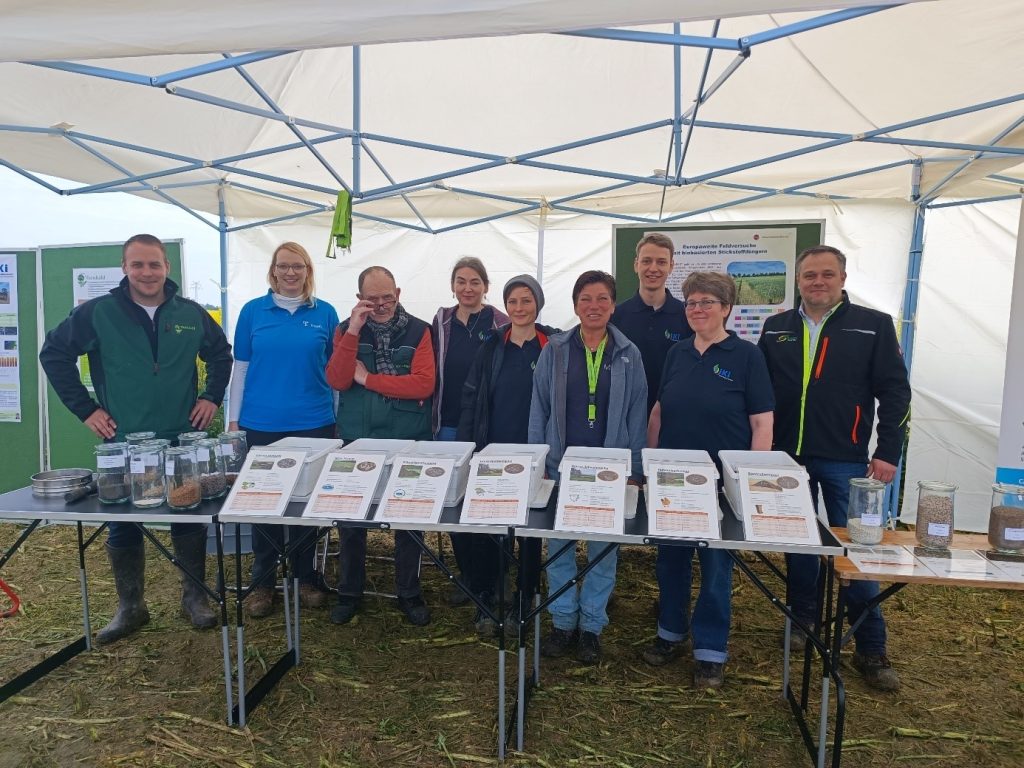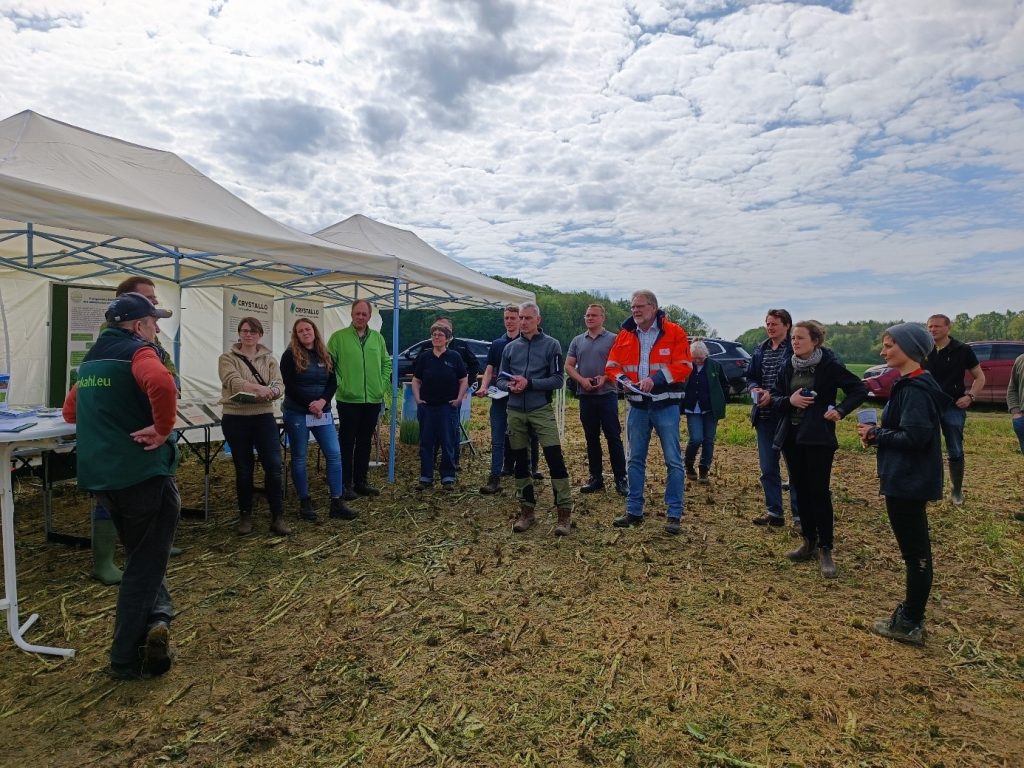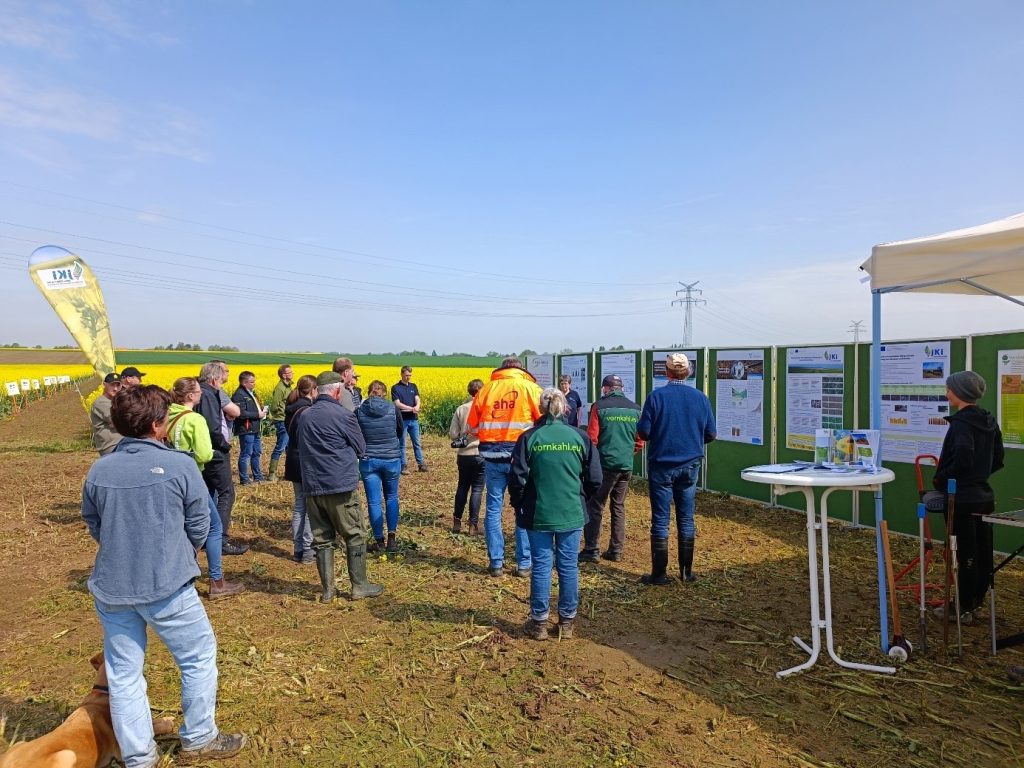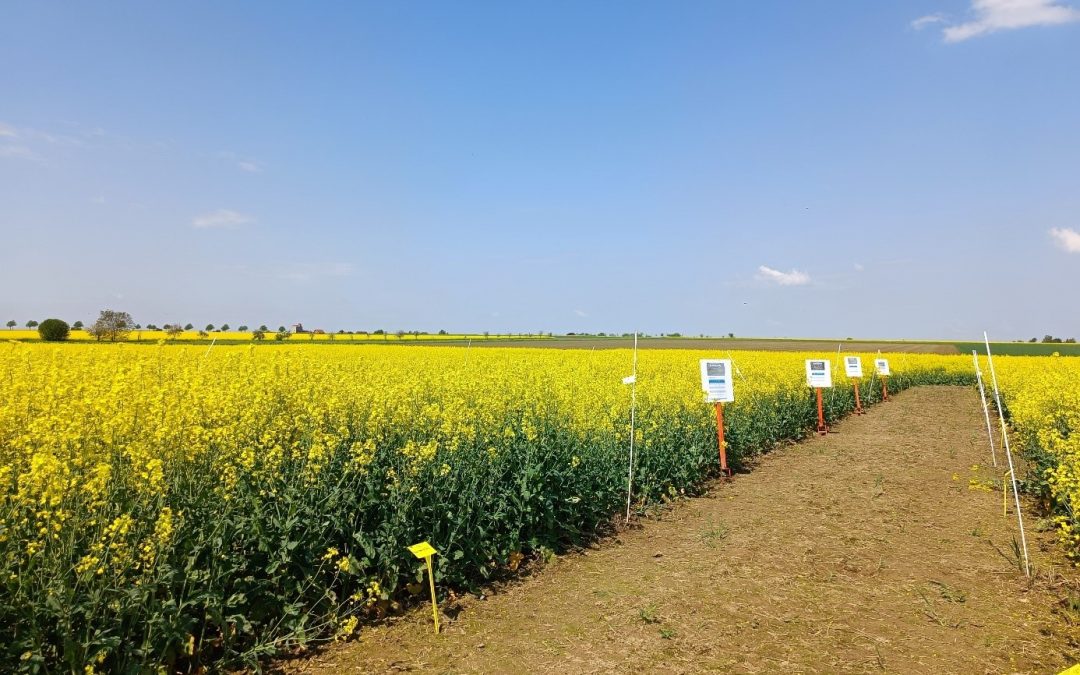On May 12, LEX4BIO partner Julius Kühn Institut hosted a field day in Germany dedicated to studying the potential of biobased fertilizers in agriculture. A fertilizer trial where different organic fertilizers were tested for their agronomic performance was presented. Local organic fertilizers, such as composts (biowaste, green waste, sewage sludge), digestates (mixed and from pig manure), sewage sludge and poultry dung were tested in comparison to straw as a control and mineral fertilizer control.
In another trial, different fertilizers from waste water treatment plants (three different struvites – MgNH4PO4 × 6H2O) were tested in comparison to mineral phosphorus (P) fertilization and plots without P application, or without P and magnesium (Mg) application to differentiate between P or Mg effects on crops.
About 45 visitors, to include journalists, operators from waste water treatment plants and composting facilities, scientists and farmers, listened to the first results of the trials and visited the oilseed rape field under splendid sunny conditions. In addition to the sampling strategy of the trials, the methodology of investigation was presented as well. The use of the different fertilizer samples aimed to demonstrate to the audience the actual amounts of material that is needed to fertilize the field and also, how the fertilizers look like and smell.
First and preliminary results show the following:
- In the organic fertilizer trial, the plant cover was highest when sewage sludge compost or mixed digestates were applied and lowest with green waste compost.
- Soil life in terms of respiration was highest in plots where sewage sludge was applied and lowest with application of digestates from pig slurry and with green waste compost.
- Antibiotics could be detected in all animal-based products and sewage sludge containing fertilizers.
- Plastic particles were found in biowaste and green waste compost as well as in sewage sludge and sewage sludge compost.
- The different struvite fertilizers performed well, and better growth in terms of plant height was observed in comparison to the zero-P control and plots without P and Mg application.
Follow Lex4Bio on LinkedIn, Twitter and Facebook to stay in the know with our latest developments.
